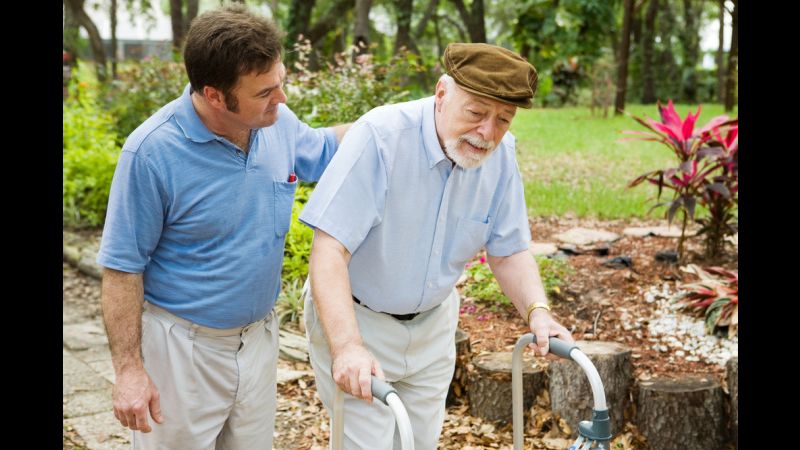Years ago, a typical family caregiver was more often than not a middle-aged woman (most likely the daughter or daughter-in-law) providing care for a loved one. For years, many have wondered why exactly sons don’t seem to be pulling their weight as caregivers. But now, all of that seems to be changing as a new study conducted by the Alzheimer’s Association revealed a recent rise in male caregivers.
The Findings Explained
According to estimates made by the Alzheimer’s Association, male caregivers now make up 40 percent of the total number of caregivers. Although this is still less than half, proving that caregivers are still mostly women, this is a huge increase in male caregivers as only 19 percent of caregivers were male back in 1996.
Now that’s certainly not to say that sons weren’t pulling their weight as caregivers before this study; it’s just that on average, sons were not providing as many hours of care for a parent as daughters. According to a previous study, sons only provided 5.6 hours of care while daughters provided 12.3 hours of care. But now sons are catching up, and fast!
These new statistics from the Alzheimer’s Association study reveal that the number of male caregivers has doubled just over the course of 15 years, and that number is expected to increase in correlation with the increasing number of older adults diagnosed with Alzheimer’s disease.
So what exactly are the implications of this study, and what caused this recent rise in male caregivers? Perhaps the biggest reason why this number has increased so dramatically is that Alzheimer’s disease is more prevalent among women than men. 3.9 million women 65 years or older are diagnosed with Alzheimer’s disease or another form of dementia while only 1.8 million men in that same age group are diagnosed.
Changes in the Caregiver World
This recent rise in male caregivers is certainly a significant change, but it isn’t the only change in the caregiver world. According to the National Alliance for Caregivers and AARP’s Caregiving in the U.S. 2015 report, an increasing amount of millennials, or those between the ages of 18 and 34, are now becoming caregivers. In fact, they make up close to 25 percent of all caregivers!
Although these are some pretty big changes in the caregiver world, it’s important to realize that all caregivers, regardless of age or gender, face the same challenges that come along with this rewarding yet demanding profession.
Providing care for a loved one, especially if they are diagnosed with Alzheimer’s disease or a form of dementia, can be extremely difficult. After all, caregivers may need to assist their loved one with tasks that they are just not used to doing, such as cooking all the meals or cleaning the house on a regular basis.
This transition can be tough for all caregivers, which is one reason why there are so many resources out there to help, such as the Alzheimer’s Association (www.alz.org) and the National Association for Area Agencies on Aging (www.n4a.org).


